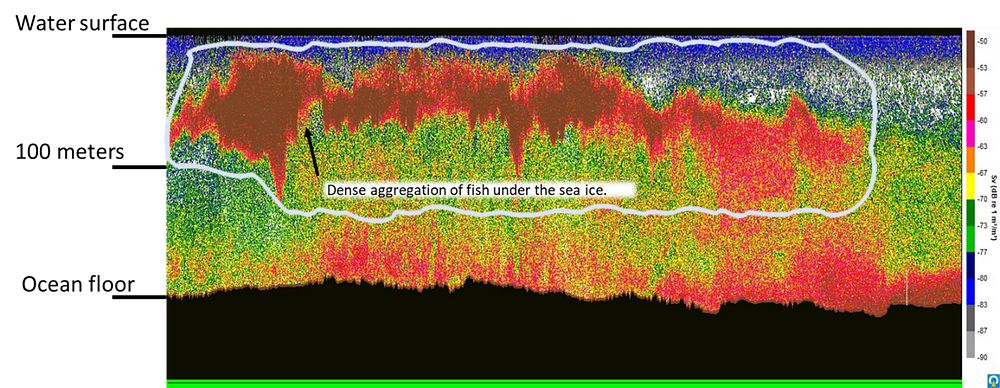15 January 2024 blog
By: Maxime Geoffroy, Frida Cnossen, Einat Sandbank, Ingvild Ytterhus Utengen, and Paul Renaud
Part of the work conducted during the Polar Front campaign aims to understand the structure of pelagic communities across the Barents Sea Polar Front. These pelagic animals are comprised of fish living in the water column and macrozooplankton, drifting animals larger than 1cm. Pelagic animals play a critical role in marine ecosystems by transferring energy from lower trophic levels, such as copepods, to top predators like cod, seabirds, and whales.
During this Polar Front cruise, we are using a suite of trawls and acoustic instruments to study these interesting animals. So far, we are finding a diverse range of macrozooplankton, dominated by copepods, krill, arrow worms, amphipods, and hydrozoans. Paul even found his favorite macrozooplankton, Tomopteris, a pelagic polychaete (Figure 1). We have also found high abundances of sub-adult and larval capelin just south of the Front at a time when adult capelin spawn closer to the coast. Surprisingly, few of these juvenile fish were feeding. The various species of macrozooplankton we are collecting with our net are reflected well in the stomachs of the few fish who had eaten recently. Most of the fish appeared to be hungry though…unlike us, who are served three meals and cakes twice daily.

Figure 1. Two more unusual macrozooplankton collected during the cruise: a. the polychaete worm Tomopteris sp., and b. (most likely) the amphipod Halirages fulvocinctus. (Photos: Frida Cnossen)
Another exciting encounter during this cruise is the ubiquitous occurrence of very dense schools of fish detected with the echosounder under the ice north of the Front at depths where water temperatures range from -1.6˚C to 1.5˚C (Figure 2). Because of the frigid temperatures outside, remaining below -15˚C, sea ice is forming rapidly, preventing us from trawling to confirm which species are forming these dense schools. One possibility is polar cod, the most abundant Arctic pelagic fish. As we continue cruising, we are learning more and more about the Polar Front during winter and trying to find ways to identify the true culprit of this strong acoustic signal despite the ice cover. To be continued…

Figure 2. Dense schools of fish detected on the ship’s echosounder under the ice north of the Polar Front
**
The expedition is part of the Research Council of Norway funded project “Polar Front ecosystem studies using novel autonomous technologies: Knowledge for environmental management and assessing ecological risk” (PolarFront) with additional financial support from ConocoPhillips and Equinor. The project, which is led by Paul Renaud, Akvaplan-niva, focus is on the hydrographical, chemical and biological processes in the Barents Sea Polar Front region.
More about the Polar Front project here: https://www.akvaplan.niva.no/en/projects-networks/polar-front-ecology/



